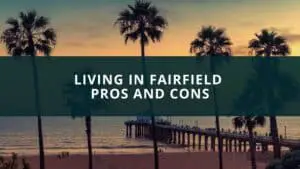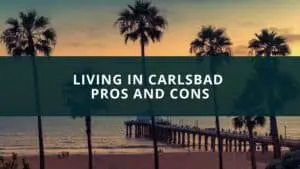City of South San Francisco, California
The City of South San Francisco is a city located in the northern part of the San Francisco Bay Area in the state of California, United States. It is one of the largest cities in the Bay Area with a population of over 63,000 people. The city is known for its picturesque views of the Bay and its proximity to the San Francisco International Airport. The city is also home to a number of major industries including biotechnology, pharmaceuticals, and food processing.
South San Francisco is a diverse city with a large number of residents of Asian, Hispanic, and Caucasian descent. The city is also home to a number of immigrants from all over the world. The city has a strong economy and is home to a number of major corporations.
South San Francisco is an exciting place to live and work. The city offers a variety of activities and attractions for residents and visitors. The city is also a great place to raise a family.
Quick navigation
1. Pacific Heights
Pacific Heights is a chic and affluent neighborhood in San Francisco, California. The neighborhood is known for its stunning Victorian houses, beautiful views of the San Francisco Bay, and its close proximity to downtown.
Pacific Heights is home to some of the city’s wealthiest residents, as well as a number of embassies and consulates. The neighborhood is also popular with tourists, who come to admire the architecture and take in the views.
Despite its upscale reputation, Pacific Heights is also a very diverse neighborhood, with a mix of families, singles, and retirees. There is a strong sense of community in the neighborhood, and residents take pride in their homes and businesses.
If you’re looking for a taste of luxury in San Francisco, Pacific Heights is the neighborhood for you. From its stunning residences to its lively community, Pacific Heights has something for everyone.
2. Nob Hill
Nob Hill is a neighborhood in San Francisco, California, United States. It is one of the city’s 44 hills, and one of its original “Seven Hills”. Nob Hill is named after the wealthy California Central Pacific Railroad magnate, Collis P. Huntington.
The neighborhood is bounded by California Street on the east, Powell Street on the west, Washington Street on the south, and Pine Street on the north. The streets of Nob Hill were some of the first to be paved in San Francisco.
The neighborhood is home to Grace Cathedral, the headquarters of the Order of the Eastern Star, and the Nob Hill Masonic Center. The California School for the Deaf is also located in Nob Hill.
The neighborhood has a historic association with the LGBTQ community. It was the site of the 1966 Compton’s Cafeteria riot, one of the earliest recorded transgender riots in American history.
The neighborhood is also home to the Mark Hopkins Hotel, the InterContinental Mark Hopkins San Francisco, and the Huntington Hotel.
3. North Beach
Nestled between Fisherman’s Wharf and the Golden Gate Bridge, San Francisco’s North Beach neighborhood is a must-visit for anyone visiting the Bay Area. This vibrant and historic area is home to a large Italian-American community, as well as a thriving arts and nightlife scene.
Some of North Beach’s most popular attractions include the world-famous City Lights Bookstore, the Beat Museum, and the Cable Car Museum. Visitors can also enjoy a meal at one of the neighborhood’s many excellent restaurants, or catch a show at one of its many live music venues.
Whether you’re looking to explore San Francisco’s rich history or just want to enjoy a good meal and a night out on the town, North Beach is the perfect place for you.
4. Chinatown
Chinatown is a neighborhood in Downtown Los Angeles, California that became a focal point for the Chinese-American community in Southern California. The area includes restaurants, shops, and cultural centers that portray the Chinese culture and heritage.
The first Chinatown in Los Angeles was established in the 1880s by Chinese immigrants who came to work on the transcontinental railroad. Many of these immigrants decided to stay in Los Angeles after the railroad was completed, and they began to set up businesses and organizations in the Chinatown area.
Chinatown began to grow rapidly in the early 1900s as more and more Chinese immigrants arrived in Los Angeles. By the 1920s, Chinatown had become a bustling and vibrant community. However, the Chinatown area was destroyed in the 1930s during the construction of Union Station.
The current Chinatown in Los Angeles was established in 1938. It is located on Broadway, just north of Downtown Los Angeles. Chinatown is currently home to a large population of Chinese-Americans, as well as Chinese immigrants from other parts of the world.
5. Financial District
The Financial District is the economic heart of California. It is home to the state’s major financial institutions and businesses. The district is also a major tourist destination, with its many shops, restaurants, and attractions.
The Financial District is located in downtown San Francisco. It is bounded by Market Street, the Embarcadero, and Montgomery Street. The district covers an area of approximately 1.5 square miles.
The Financial District is home to many of California’s major banks and financial institutions. These include the Bank of America, the Wells Fargo Bank, the Chase Bank, and the Citibank. The district is also home to the California Stock Exchange, the Nasdaq Stock Market, and the New York Stock Exchange.
The Financial District is a major tourist destination. Its many shops and restaurants offer a variety of goods and services. The district is also home to numerous attractions, such as the Ferry Building, Union Square, and the Transamerica Pyramid.
6. Union Square
Union Square is a public plaza located in the heart of downtown San Francisco. The square is bordered by Market Street, Geary Street, Post Street, and Stockton Street. It is considered to be one of the city’s most popular tourist destinations, as well as a major shopping and dining district. The square is home to a number of hotels, including the Westin St. Francis, Hilton San Francisco, and the Parc 55 San Francisco. There are also a number of office buildings, retail stores, and restaurants located around the square.
7. Mission District
The Mission District is a neighborhood in San Francisco, California, originally known as “The Mission Lands” meaning the lands belonging to the sixth Alta California mission, Mission San Francisco de Asís. The Mission District is located in east-central San Francisco. It is bordered to the east by U.S. Route 101, which forms the boundary between the eastern portion of the city and the San Francisco Bay. The Mission District has a long history as a Latino neighborhood, and has been home to many Latino residents since the 1950s. In recent years, the Mission District has gentrified, and is now home to many young professionals and families. The Mission District is still known for its vibrant Hispanic culture, and its many Mexican restaurants, taquerias, and bakeries.
8. Haight-Ashbury
Haight-Ashbury is a neighborhood in San Francisco, California, named for the intersection of Haight and Ashbury streets. It is also commonly referred to as The Haight. The neighborhood is known for its history of, and being the origin of, the hippie counterculture.
The Haight-Ashbury district was originally a quiet middle-class residential neighborhood. In the 1960s, it became a center of the counterculture movement. Young people began to move into the area, and the neighborhood became known as a haven for bohemian artists, musicians, and drug users.
The neighborhood has since gentrified, but it still retains a number of its original character. The Haight is home to a number of small businesses, including clothing stores, bookstores, and cafes.
The Haight-Ashbury neighborhood is located in the western portion of San Francisco, west of Golden Gate Park. It is bounded by Haight Street to the north, Ashbury Street to the south, Stanyan Street to the west, and Buena Vista Avenue to the east.
9. Castro
Castro, California is a small town in the San Francisco Bay Area. It is known for its diversity and acceptance of all people. The town is home to many LGBTQ+ people and businesses. Castro is also known for its annual Pride Parade, which is one of the largest in the United States.
10. South of Market
San Francisco’s South of Market neighborhood is home to a vibrant tech community and some of the city’s best nightlife. The area is also home to a number of art galleries, trendy restaurants, and hipster cafes.
SoMa is a great place to live if you’re looking for an urban environment with a lot to do. The neighborhood is convenient to public transportation and is within walking distance of many of San Francisco’s most popular attractions.
If you’re looking for an apartment in SoMa, you’ll find that the prices are some of the highest in the city. But, you’ll also find that the apartments are usually spacious and luxurious.




